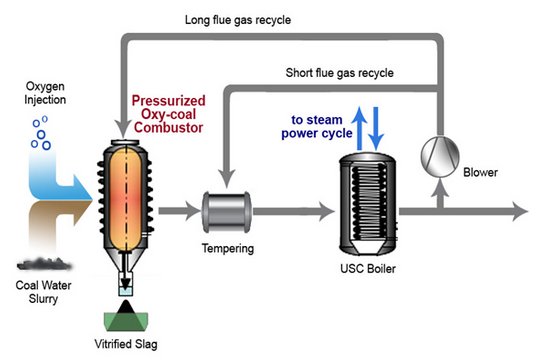DOE funds next generation coal power technology


Rumors of coal's demise might be greatly exaggerated. The U.S. Department of Energy (DOE) is funding new "clean coal" technologies that would retrofit existing power plants to be in compliance with pollution rules.
On Friday, ThermoEnergy announced that Unity Power Alliance (UPA) has been selected for a DOE grant. UPA is joint venture with ITEA S.p.a, a European company that specializes in a flameless oxy-combustion process that burns coal under high pressure in highly purified oxygen.
The process achieves higher efficient that conventional coal fired plants, which burn coal under normal pressure in air. It also allows for pollutants such as CO2 to be captured before entering the astrosphere, ThermoEnergy says. The DOE grant will pay for the R&D.
DOE's research will also make possible a larger scale pilot process, which will receive additional government support, said UPA managing director Robert Marrs. "The overall goal is to lay the foundation for a 50 MW pressurized oxy-combustion power plant, which would be followed by a 320 MW commercial power plant."
New Environmental Protection Agency (EPA) rules were issued this year that would require new coal power plants to dramatically reduce carbon emissions. The rules came in conjunction with new regulations on mercury emissions and cross-state pollution from utilities.
The question remains of what to do with the captured carbon. Carbon sequestration poses potential high costs, high-energy requirements, and stored gas could leak. Recently, start-ups have been looking into ways to commercialize carbon capture by transforming it into useful byproducts like baking soda.
(Image credit: UPA)
Related on SmartPlanet:
This post was originally published on Smartplanet.com
